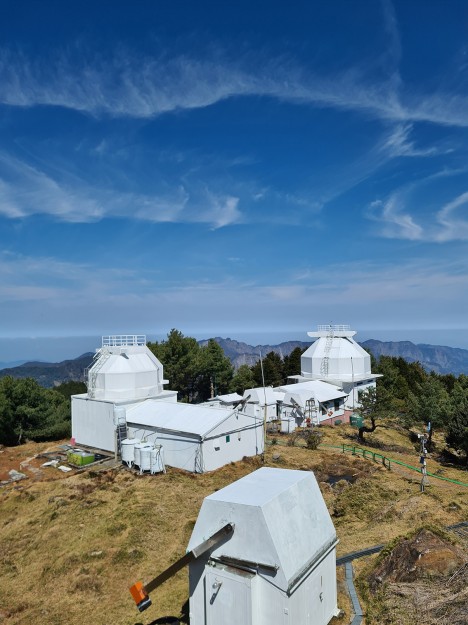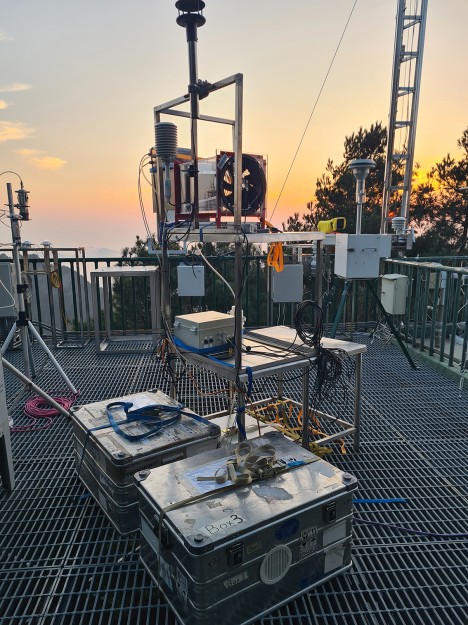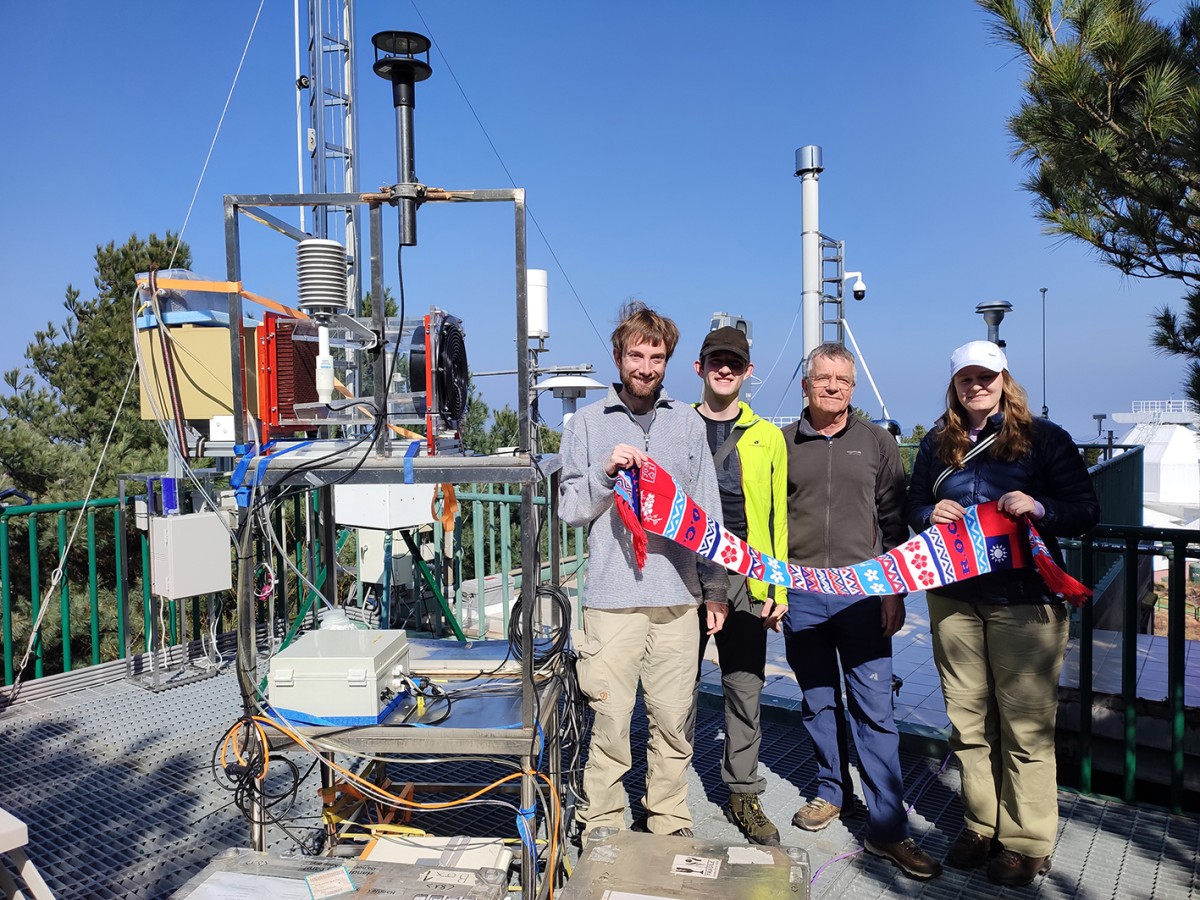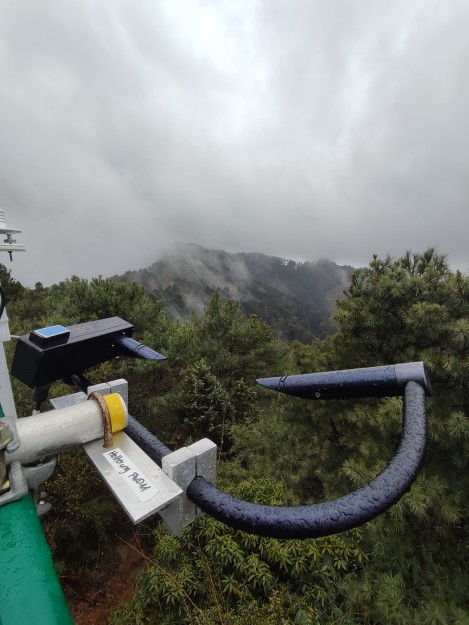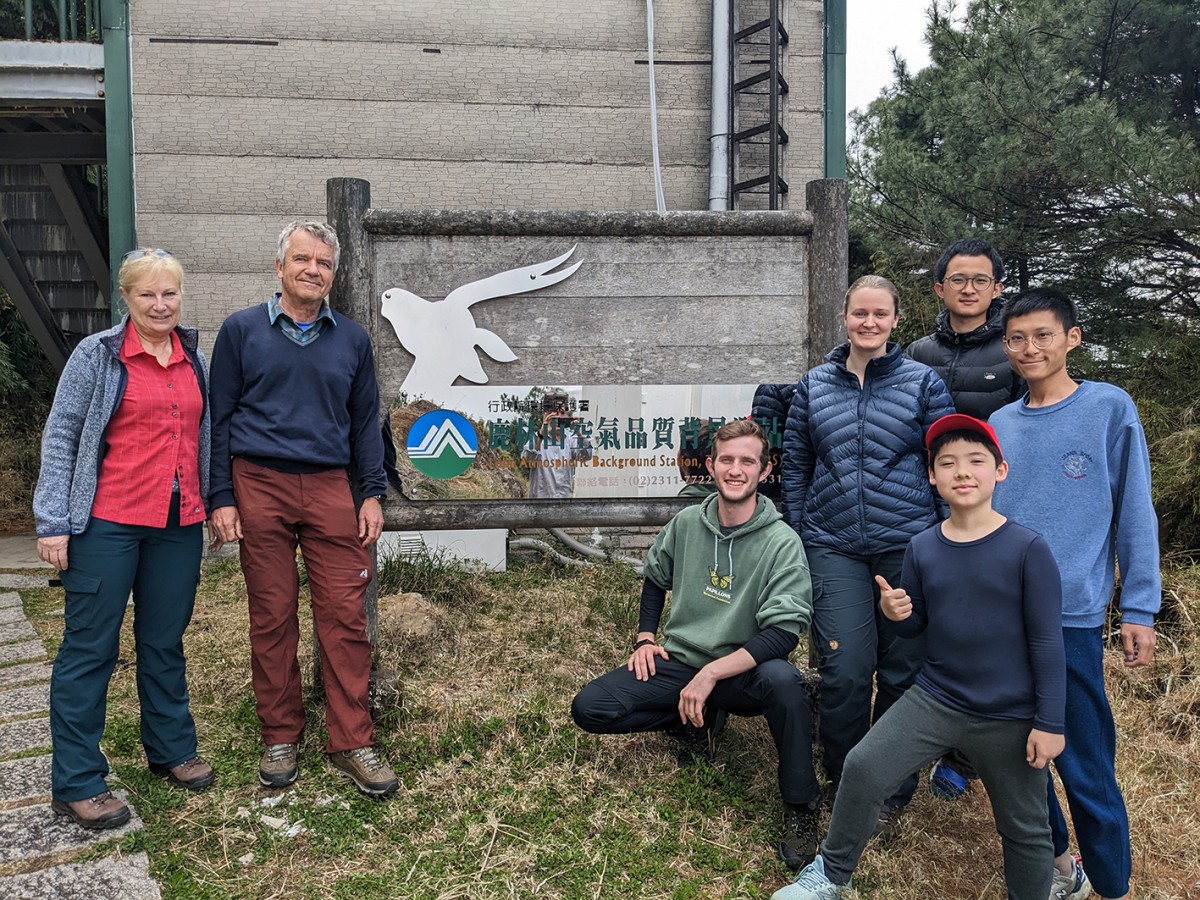
Waiting for the fog
Up on Mount Lulin in Taiwan, at an altitude of 2,862 metres, Robin Achtstetter und Madeleine Falkowski did everything they could to avoid missing the gathering fog. No matter whether it was night or day – as soon as the visual range meter showed visibility to be under 1,000 metres, that was when work began for the two landscape ecology students. They collected fog water samples and, among other things, examined the size of the fog droplets. They froze the samples, as these were to be subjected to more detailed analysis at the National Central University (NCU) in Taiwan, for example with reference to organic carbon, nitrates and sulphates – all indicators of aur pollution.
Fog is a cloud with ground contact. This may sound poetic, but for researchers it has tangible advantages. Whereas taking water samples from clouds is a complicated, laborious business – and can by no means be managed in every case – fog samples can be taken from the ground. “Clouds are very heterogeneous – for example, as regards their chemical composition and their ‘lifetime’. We don’t know very much about them, although they play an extremely important part in the climate system,” says Prof. Otto Klemm from the Institute of Landscape Ecology at the University of Münster who, together with his colleagues from the NCU in Taoyuan City in the north of Taiwan, is responsible for this long-term project. Klemm’s special interest is in analysing the chemical composition of fog and clouds and its relation to their physical properties. In climatology, for example, it makes a big difference whether there are many small droplets or just a few big ones – even if none of them can be seen with the naked eye. The reason why it makes such a difference is that the droplets reflect the sun’s rays in different ways and help to decide the extent to which the ground warms up under the clouds.
Otto Klemm was already writing about fog in his diploma thesis around 40 years ago, and he has been researching in Taiwan since 2001. Worldwide, he says, “dramatic changes can be seen.” In many places, he explains, there is much less fog than there used to be. One of the reasons is that, as a result of climate change, the air is becoming warmer and can absorb more water. Moreover, the air is becoming cleaner in many places, which means that water condenses on a smaller number of dirt particles. However, there are some regions which are an exception – for example, in India and Pakistan – where fog occurs more frequently.
“We want to have a better understanding of the interaction between air pollution and fog,” says Klemm. “The tipping point at which fog is formed is very sensitive and depends on the particles in the air, among other things. However, we don’t know exactly what the driving forces are.” His team is engaged on basic research. “Its usefulness is not always immediately apparently to the general public,” he says. “But there are some applications that cannot be ignored.” Less fog, for example, means that the sun’s rays warm up the ground more. Climate change means less fog – and less fog is a driver for climate change. However, less fog can also have benefits for us humans, says Klemm: fewer traffic accidents, for example.
The station on Mount Lulin is an astronomical station, and for 20 years now there has also been a station for atmospheric-chemical investigations in operation there. The Münster team are regular guests there – especially in spring, when there are good conditions for fog. “In Taiwan,” says Klemm, “there are many more places where fog frequently occurs. In Münster we have to wait a long time for that to happen.” A propos waiting: in Taiwan, too, the fog sometimes takes its time. “Our measuring campaign this year lasted four weeks,” Klemm remembers. “For the first ten days, there was no fog on Mount Lulin, and the two students needed nerves of steel. Then the fog eventually came, and they were very successful.”
Anyone who enjoys researching into fog sometimes has to leave their comfort zone. “You’re often out and about at night – when it’s dark, cold, damp and … well, foggy – and so you need to be highly motivated,” Klemm concedes. Robin Achtstetter and Madeleine Falkowski can also testify to that, even though they were working at an established and relatively comfortable station. Their work involved arduous climbs in tropical conditions, poisonous animals, isolation on the mountainside, night shifts – nevertheless, they are both thrilled by their research stay and wouldn’t want to have missed their experiences in Taiwan on any account. “Quite apart from meeting a lot of great Taiwanese colleagues and the fascinating insights into the culture here and the fantastic scenery … we’ve learned a great deal about the research and the technology used,” says Achtstetter. “And we overcame all the problems by ourselves. When our data logger broke down, for example, we took it apart and found the fault. I now feel more confident, because I know that even if something should go wrong in the research work, you can find a way to deal with it.”
The fog on Mount Lulin is sometimes dirty, depending on how the air masses flow. “In China they’re doing a lot to keep the air clean,” says Madeleine Falkowski, “but especially in spring a lot of contaminants come over from Thailand, Vietnam and Laos for example, from fires that have been started deliberately. They burn biomass, agricultural waste matter, and the fires often get out of control. We have actually seen that with the naked eye in our fog samples. Whenever the fog contained soot particles, the samples were not as lucid as they otherwise were,” she explains. As evidence, she produces a photo showing sooty paper tissues which she had used to wipe out the vessels containing contaminated fog samples.
by Christina Hoppenbrock
This article is from the university newspaper wissen|leben No. 4, 7 June 2023.

